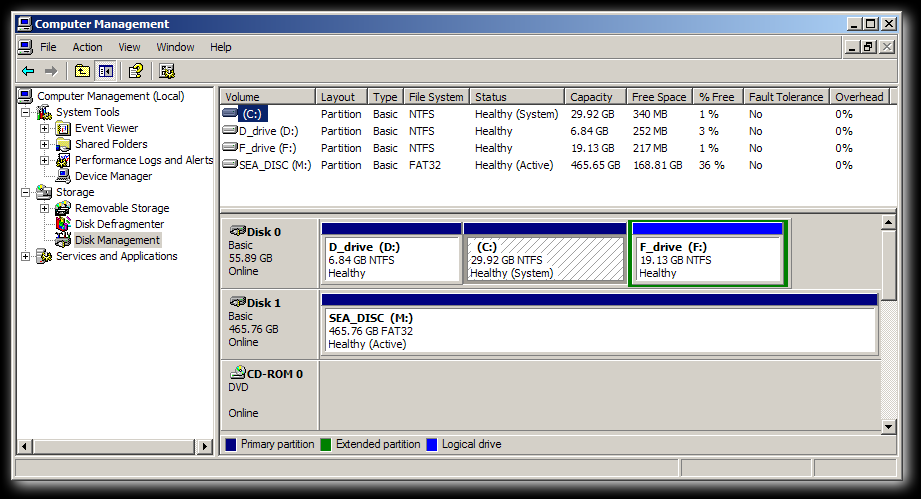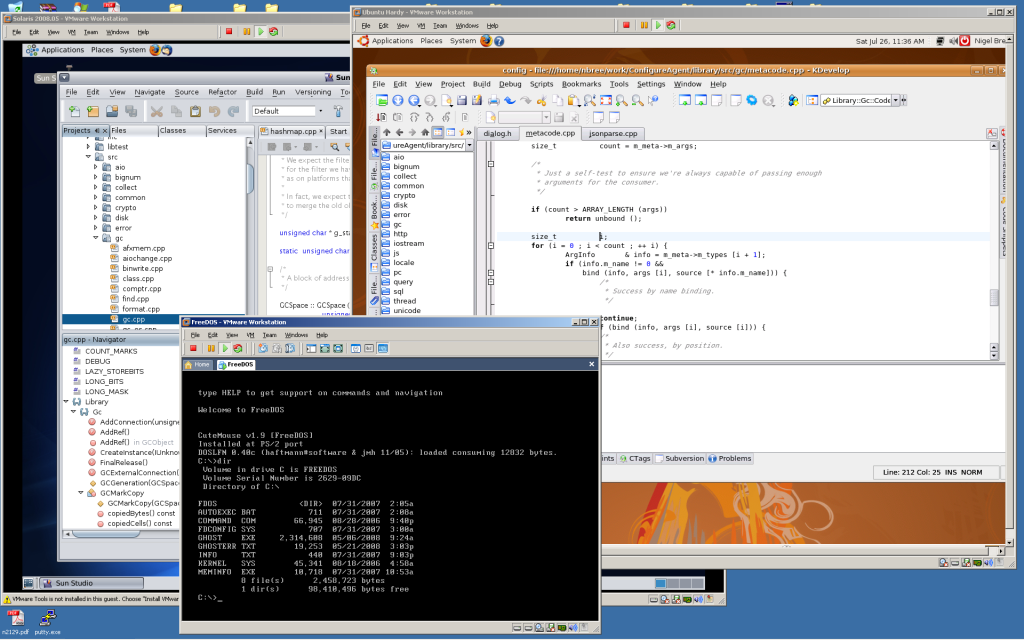Post by Rad on Jul 22nd, 2008 at 7:42pm
Thanks gents.
I created a Ghost 12 back-up image today on my external USB drive.
One thing .. I noticed my C_drive is *not* my first drive. About a year ago, when I started running low on space, I reformatted the D_drive, which held the emergency restore utility and back-up (~ 7 gigs) that came with the laptop.
Do you forsee that creating any problems?
Since the drive was "invisible" (I forget the file system used), I would expect all pertinent boot info/files to be contained on the C_drive. When trying to access the D_drive before I reformatted it to NTFS, it would give me a warning that said something like, "You don't want to be here. Go away."
I will attach a screenshot of computer management screen. See here:
 computer_mgmnt.png (44 KB | )
computer_mgmnt.png (44 KB | )
I created a Ghost 12 back-up image today on my external USB drive.
One thing .. I noticed my C_drive is *not* my first drive. About a year ago, when I started running low on space, I reformatted the D_drive, which held the emergency restore utility and back-up (~ 7 gigs) that came with the laptop.
Do you forsee that creating any problems?
Since the drive was "invisible" (I forget the file system used), I would expect all pertinent boot info/files to be contained on the C_drive. When trying to access the D_drive before I reformatted it to NTFS, it would give me a warning that said something like, "You don't want to be here. Go away."
I will attach a screenshot of computer management screen. See here:
 computer_mgmnt.png (44 KB | )
computer_mgmnt.png (44 KB | )
